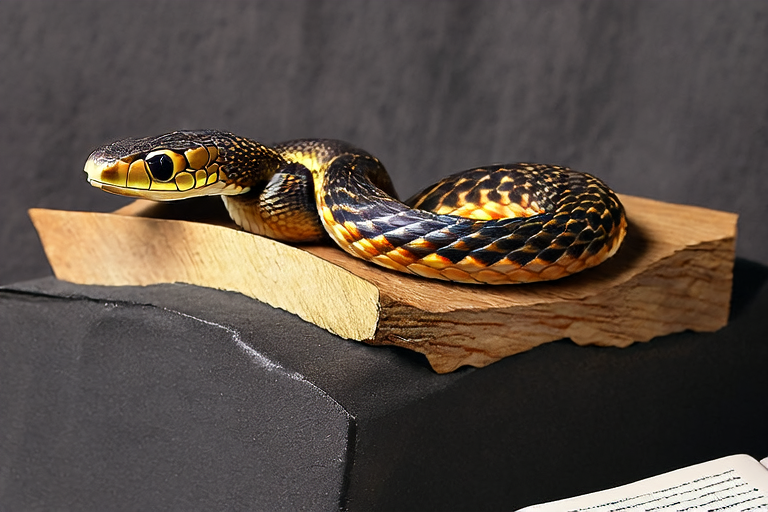The Ultimate Guide to Caring for the Beauty Rat Snake
Welcome to your comprehensive guide on how to care for the beauty rat snake, a captivating and unique reptile that can make an excellent pet for those interested in herpetology. This guide will cover all aspects of snake care, from basic information about the beauty rat snake to detailed instructions on creating a suitable environment, diet, health maintenance, and building a positive relationship with your pet.
Basic Information About the Beauty Rat Snake
The beauty rat snake (Elaphe taeniura), also known as the red sand boa or Chinese rat snake, is native to parts of Asia, including China, Taiwan, and Vietnam. These snakes are medium-sized, typically reaching lengths of 3-5 feet, and have striking coloration with reddish-brown scales that create a beautiful pattern. They are non-venomous and generally docile, making them ideal pets for beginners and experienced snake owners alike. In terms of behavior, they are active during the day and night, but they tend to be more active at dusk and dawn. They are also excellent climbers and swimmers, so providing appropriate enrichment in their enclosure is important.
Setting Up the Ideal Environment
To ensure your beauty rat snake thrives, you’ll need to set up a proper habitat that mimics its natural environment. The enclosure should be spacious enough for the snake to move around freely; a minimum size of 48 inches long by 24 inches wide by 18 inches high is recommended for adults. For juveniles, a smaller tank may suffice initially, but it’s essential to provide adequate space as they grow. Use a secure lid with ventilation holes to prevent escapes while ensuring good airflow.
Temperature control is crucial for maintaining optimal health. Maintain daytime temperatures between 80°F and 90°F (27°C to 32°C) and nighttime temperatures between 75°F and 80°F (24°C to 27°C). You can achieve this using heat mats or under-tank heaters placed on one side of the enclosure to create a temperature gradient. Install a digital thermometer and hygrometer to monitor these conditions accurately. Additionally, provide a basking spot where the temperature reaches 90°F to 95°F (32°C to 35°C).
Humidity levels should be kept between 40% and 60%. Mist the enclosure daily if necessary or use a humidifier to maintain appropriate moisture levels. Substrate options include cypress mulch, coconut fiber, or reptile carpet. Avoid using pine or cedar shavings as they can be harmful. Include hiding spots made from commercial hides or upturned plant pots to give your snake places to retreat when feeling stressed.
Safety Precautions During Care
Avoiding stressors is vital for the well-being of your beauty rat snake. Keep handling sessions short and infrequent, especially for young snakes. Always wash your hands before and after handling to prevent the transfer of bacteria or parasites. When picking up your snake, gently grasp it behind the head and support its body with your other hand. Never pick up a snake by its tail, as this could cause injury.
Dietary Needs and Feeding Frequency
Your beauty rat snake requires a balanced diet consisting primarily of appropriately sized rodents, such as mice or rats. Juvenile snakes can start with small pinky mice, progressing to larger prey items as they grow. Adult snakes can consume adult mice or small rats every 7 to 10 days. Ensure that the prey item is no wider than the widest part of the snake’s body to avoid digestive issues. Occasionally offering variety in the form of chicks or quail eggs can help maintain nutritional balance.
Common Health Issues and Preventative Measures
Regular veterinary check-ups are essential for early detection and treatment of any potential health problems. Signs of illness may include loss of appetite, lethargy, respiratory issues, or skin abnormalities. To prevent common ailments like mites or respiratory infections, keep the enclosure clean and free from excessive moisture. If you notice any concerning symptoms, consult a veterinarian specializing in exotic animals immediately.
Building a Positive Relationship
Establishing trust through consistent interaction helps build a bond with your beauty rat snake. Handle your snake gently and frequently, allowing it time to become accustomed to your presence. Training techniques such as target training can enhance communication and strengthen the connection between you and your pet. Patience is key when working with any animal, so take things slowly and reward positive behaviors with treats or extra attention.
Long-Term Care Recommendations
Maintaining a healthy lifestyle involves regular inspections for signs of wear or damage in the enclosure, cleaning substrate regularly, and checking equipment like thermometers and humidity gauges periodically. Cleaning the entire enclosure thoroughly once a month prevents bacterial growth and keeps your snake comfortable. Proper care ensures that your beauty rat snake remains happy and healthy throughout its lifespan.
